-
Easter Egg-Stravaganza Inside Birdhouses!
Happy Easter and Happy Passover!
Things are greening up nicely, the promise of spring and re-birth. It’s a most exciting time in the garden and for backyard birders! Cabin fever prevails and folks are itching to get outside and start digging in the dirt. We’ve even refreshed our age old blog by redesigning for this century… yes, it’s that old, we’ve been around a good while now because the passion for birding still exists.
Rough patch of weather for the nesting birds in our North Georgia yard. The usual suspects; a chickadee nest with 5 eggs, bluebirds with 4 nestlings in the Gilbertson box in back, bluebirds with 5 eggs in front, white breasted nuthatches in back and their smaller cousins- brown headed nuthatches in front.
This is not to mention those who don’t use birdhouses; cardinals definitely have a nest as they’re back and forth from mealworm feeders. Oh yes, we let everybody have some worms…except starlings, the dreaded nuisance birds are back but this too shall pass.
The Boston ferns are up with nest starts in 2 of them. Don’t want birds nesting in your ferns? Simply avoid offering the habitat and forego the ferns this year. Should you enjoy seeing a family of house finches so close to home (as we do), simply take the fern down to water by submersing the bottom in a bucket of water. Take care not to get their nest wet. Everyone’s been very busy staking out territory and claiming birdhouses!
We headed over to the local alpaca farm last week to score tons of fur for our spring “free nesting material promo”.
Freshly sheared, the alpacas are so sweet and such a joy to hang around with while chatting with owners of the farm.
After an unusually wet winter in the southeast, nesting activity seemed to get a late start. Warm days of April have been fab, but the last two days have been freezing and wet. If you’ve still got old man winter hanging around… thankfully it won’t be too long!
Goldfinches have turned their drab colors into electric yellow, molting in what seemed to be overnight. Hummingbirds arrived about 2 weeks ago (the only good thing about tax time). And just today, two indigo buntings were spotted at feeders. Migration’s in full swing… and it’s coming to a theater near you soon! Not sure who’s arriving when? Check Journey North.org to track migratory progressions, great website with helpful info!
Are your hummingbirds back yet? Social media is a great place to find birding groups with lots of Q&A’s posted. The info may not always be correct though! Most times, others will chime in to offer their expertise and advice, one could learn much if new to attracting and hosting bluebirds or the first season offering hummingbird feeders. Here’s a general map of when to expect the tiny sprites, but JourneyNorth provides more detailed info.
We’re hoping to catch a few orioles (who isn’t?), so grape jelly and oranges are on the menu. Rose breasted grosbeaks are a sure sign, but this year Cornell Lab reported the birds were spotted pretty far north of normal range during winter. A Baltimore oriole was made famous on social media as he spent his winter in Wisconsin! The host kept the bird fed with oranges and grape jelly, giving general info on his condition since this past January. He hung around all winter and is doing just fine!
Other “outta sorters” were Carolina wrens in Minnesota. This pair actually caught the attention of The Audubon Society for filming and research. Ranges are changing and it’s interesting to see who’s where at different times of the year.
We wish you a happy holiday and happy spring with lots of busy birding activity around your place!
-
Whose Eggs Are In Your Birdhouse?
Just when you thought this is it… a family of bluebirds or chickadees- nature might play a most wicked April Fool’s joke! Except it’s not funny and most times fatal to nestlings.
Should you become inquisitive and brave enough to monitor the nest inside your birdhouse (yes, it’s recommended) and spot an egg that’s different in size and/or color- it’s likely the wicked antics of a cowbird.
Talk about shirking responsibilities! Known as parasitic eggs, because Mom will deposit her egg in the nest of another bird, typically with at least 2 eggs already laid. She then flies off leaving full responsibility for upbringing to the unsuspecting parents.
Imagine trying to raise a baby who has grown twice the size of yourself. Just picture that for a moment. Other nestlings in the group barely have a chance at survival as the large cowbird baby hogs most of the food. This actually happens often- to wrens, bluebirds, chickadees, tree swallows and others. Some birds recognize the foreign egg and may abandon the nest or remove the egg. Most birds are unaware an imposter is looming, and end up raising the ridiculously large intruder to the detriment of their own nestlings.
It’s the natural instinct to thrive, though cowbirds won’t be bothered raising their own. Also considered nomadic, they tend to follow livestock herds for the abundant insects, their habitat being open grasslands and meadows which are far away from most nesting spots.
Cowbirds are native (unlike house sparrows or starlings) and are protected under the Migratory Bird Treaty, thus it’s illegal in most cases to remove the egg. Sometimes permits are issued to bluebird monitors and others when circumstances warrant. This is just one good reason for using correctly proportioned birdhouses. Nix the houses with really large entries, they do no favors to the birds you’re trying to attract. Avoid feeding birdseed containing millet as the tiny round seed tends to attract cowbirds. Most birds will flick this filler seed out of your feeder and onto the ground anyway.
A bit smaller than blackbirds, cowbirds have brown heads. To view they gray female or juvenile cowbirds- check sialis.org for more informtion.
And should you like to become a really, really good landlord- monitoring nests actually helps backyard birds thrive. Head over to Sialis.org where you’ll find a wealth of information and any question answered on hosting bluebirds and all native cavity nesting birds (those who use birdhouses).
Photos courtesy of Sialis.org

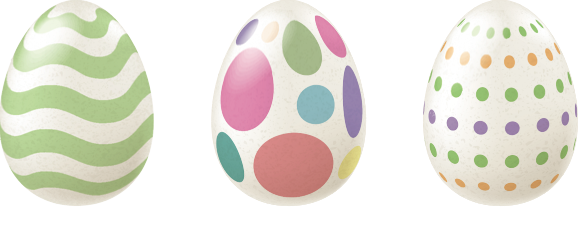
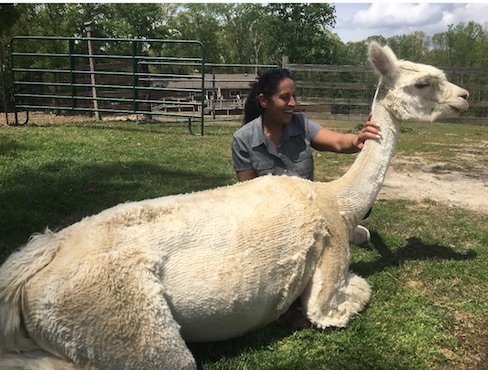 Freshly sheared, the alpacas are so sweet and such a joy to hang around with while chatting with owners of the farm.
Freshly sheared, the alpacas are so sweet and such a joy to hang around with while chatting with owners of the farm.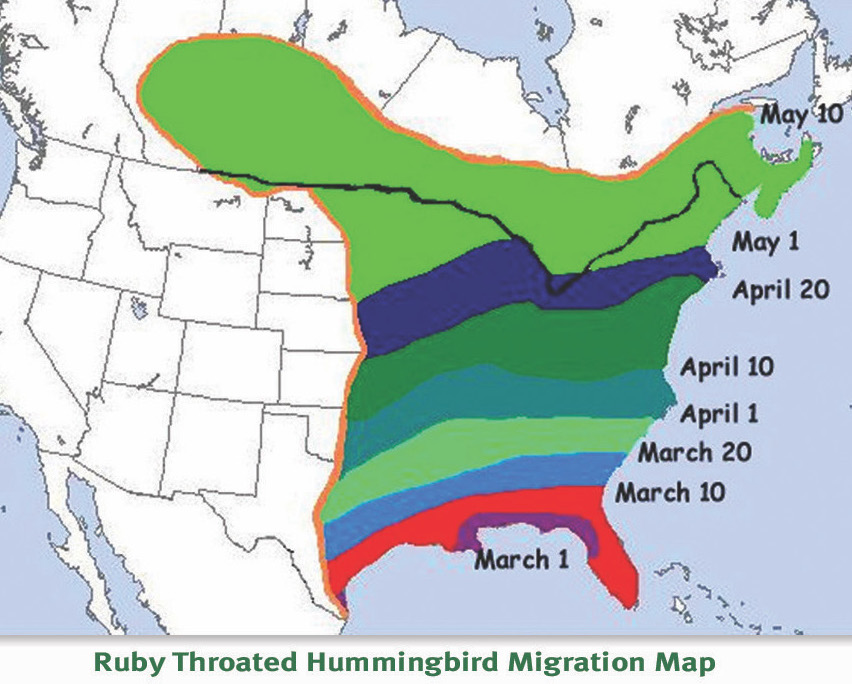
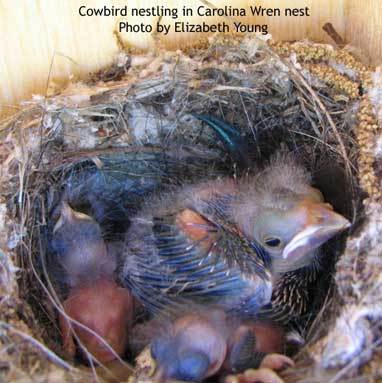
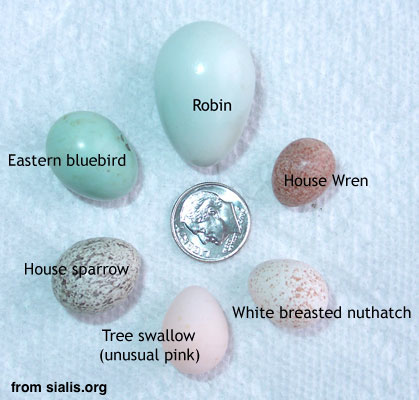
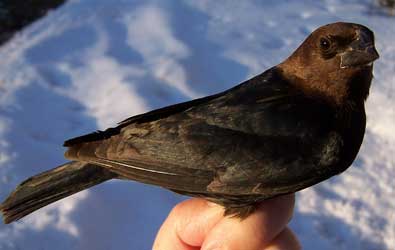 A bit smaller than blackbirds, cowbirds have brown heads. To view they gray female or juvenile cowbirds- check sialis.org for more informtion.
A bit smaller than blackbirds, cowbirds have brown heads. To view they gray female or juvenile cowbirds- check sialis.org for more informtion.